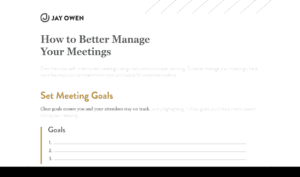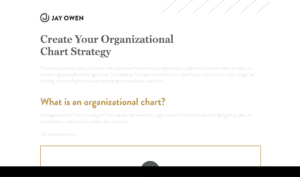EXTRAS
Recommended links:
Links to Recommended Books:
Much of my inspiration for this book and many of my ideas are simply a culmination of a lot of learning from others. Personal experience plays a big part, but if you want to improve at an exponential rate, learning from others is key. Here are a few books that have been transformative for me and I think you’ll also find exceptionally valuable.
This is one of the most popular books on the market, and it continues to sell well because it helps answer one of the most fundamental questions of life: What’s the point? Having a purpose-driven life can help in all areas, and Rick Warren does a spectacular job of walking you through this, regardless of where you are in life.
Rework is one of those books that totally rocked my world when I first read it. It presents bold ides about teams, meetings, and running a business that are outside the norm, and it really helped me shape my own vision for what business looked like for me. If you’re looking for fresh ideas on working outside the box, especially related to “ignoring the system but having a system,” check out this book.
EntreLeadership is the foundation upon which I’ve built Design Extensions for the past five plus years. It provides practical advice on how Dave Ramsey grew his business from a card table in his living room to a team of nearly one thousand people serving customers all over the world.
This is must-read material for anyone looking to start a business. The author shares the idea of needing to choose between the roles of entrepreneur, manager, and technician. He says that usually we’re one of the three, but often have to start off being all three. This is great reading if you need advice on how to grow past the early stages, or if you’re unsure if you want to start a business in the first place.
Former FBI agent Christopher Voss shares incredible stories of life-and-death negotiation settings and compares them to all types of negotiation in life. If sales and negotiating are something you struggle with or want to get better at, this book will give you insights and ideas that really help.
A viral TED Talk became the foundation upon which this book was produced. If you’ve not seen that TED Talk, go watch it and then go read the book. This is must-see and must-read material for anyone who wants to grow a successful business: Simon Sinek, “How Great Leaders Inspire Action,”
While you may be more familiar with the names Steve Jobs and John Lasseter when it comes to the foundation of Pixar, Ed Catmull was the third piece of the puzzle who helped Pixar go from struggling idea to one of the most successful animation and movie studios of all time. This book is especially helpful if you do anything in the creative sphere, but the ideas on team building and communication are valuable to anyone. Not to mention the story of Pixar is just a great one to read.
Marketing can be hard and can get confusing. Donald Miller’s idea of a “story brand” is one that really will help you add clarity to your messaging and communicate in a way that will help your business get the attention it needs to acquire the customers you want.
Many of us take a lot of time to plan our businesses but not enough to plan our lives as a whole. If the work-life balance question comes up a lot for you, this is an excellent book to help you put together a specific, actionable plan to improve your life as a whole.
If process and procedures have become a struggle for you as you grow, this book is a must read. Gino Wickman gives very tactical advice on how to structure your business in a way that provides stability as it grows. This is especially critical for anyone approaching or passing eight to ten team members.
If you like Traction and want even more in the area of structure and process, this book is hard to beat. It was recommended to me by Clint Drawdy from iMethods during a recent podcast interview, and I couldn’t put it down once I started. The practical worksheets and examples in this book are some of the best I’ve come across for helping put structure to things that many of us entrepreneurs start by playing by the seat of our pants.
Links to recommended tools:
Below is a list of some of the key tools I’ve mentioned in this book and that have had a huge impact on my ability to build a business that lasts.
BASECAMP >
If keeping things organized and communicating well is something you want to improve, Basecamp is an awesome tool. It’s easy to use, has a great interface, and has been around for years. This was the first project management system we used for Design Extensions.
TEAMWORK >
This is similar to Basecamp in that it helps solve the project management process, but does it with a different set of features. I recommend trying a free trial of both to see which one works better for your needs
Pipedrive >
This tool helps our team stay on track with sales. In chapter 14, we talked about the importance of keeping opportunities in the pipeline, and this helps you track them all. The built-in stats and reporting help make it clear where you are in the sales process and give you vision for what the upcoming months might look like.
quickbooks >
Few companies have as much experience with accounting software as Intuit. We switched to QuickBooks Online a few years back, and it makes it easy to track all income and expenses from anywhere. I can view it from any location, and our office admin, bookkeeper, and accountant can all easily have access from where they are. Keeping your numbers organized is critical to long-term success, and Quickbooks online can help give you the tools to do just that.
g suite >
Google Drive >
Google Sheets >
Google Docs >
Gmail >
Gone are the days of sending a document back and forth via email and hoping you have the right version. G Suite includes spreadsheets, a word processor, presentation software, and much more, all from the cloud. This allows you to access it from anywhere. The collaboration features on Google Docs are exceptional—in fact, I’m writing the book and collaborating with my editor on this right now.
slack >
This has become the de facto chat app for many organizations, especially in the tech space. It allows for group and private chat rooms, voice chat, file sharing, and much more. The basic version is free as of the writing of this book and is great for most smaller organizations.
grammarly >
As I mentioned before, I’m horrible with spelling and grammar. This app helps solve that. You can connect it to your web browser or word processor and it will provide advanced grammar advice to help fix your copy.
mailbutler >
This is an add-on extension for Apple Mail users that gives you tons of new capabilities like scheduling an email to be sent at a specific time, tracking when someone opened an email, and seeing more details on a contact. This is really helpful for those in sales (which is everyone).
Hubspot >
Tom Barret from navigate the journey >
Being a healthy and unified team doesn’t just happen, it has to be committed to and worked towards on a regular basis. We help teams align around a vision through team building sessions and coaching that leads to optimal cohesion and greater productivity.
Stratop by Tom Patterson >
Powered by the Paterson Process, StratOp has helped for-profit companies, not-for-profits and churches, professional sports teams, and even the government of an entire country. If your team needs clarity, alignment, momentum and growth, StratOp is for you.
UpWork >
Need help with a project and not sure where to look? Upwork is a great place to find freelancers.
Audible >
Save time and listen to your reading list
Survey Monkey >
Survey tool
Lattice >
The people management platform
Zoom >
Zoom is the leader in modern enterprise video communications, with an easy, reliable cloud platform for video and audio conferencing, chat, and webinars
Proposify >
Discover the proposal software that modern sales teams use to create, send, track, and e-sign winning proposals, contracts, and agreements.
Zapier >
Easy automation for busy people. Zapier moves info between your web apps automatically, so you can focus on your most important work.
IFTTT >
IFTTT is the free way to get all your apps and devices talking to each other. Not everything on the internet plays nice, so we’re on a mission to build a more connected world.
Book Resource Bibliography Links:
Chapter 1
- Dan Diamond, “Just 8% of People Achieve Their New Year’s Resolutions. Here’s How They Do It,” Forbes, January 1, 2013, https://www.forbes.com/sites/dandiamond/2013/01/01/just-8-of-people-achieve-their-new-years-resolutions-heres-how-they-did-it/#17876369596b.
- Jason Nazar, “16 Surprising Statistics about Small Businesses,” Forbes, September 9, 2013, https://www.forbes.com/sites/jasonnazar/2013/09/09/16-surprising-statistics-about-small-businesses.
- SBA Office of Advocacy, “Small Business Facts,” June 2012, https://www.sba.gov/sites/default/files/Business-Survival.pdf.
Chapter 2
- Rick Warren, Purpose Driven Life, 27.
- “Change What Goes into Your Mind,” Ziglar (website), July 3, 2015, https://www.ziglar.com/quotes/you-are-what-you-are-and-where-you-are.
Chapter 4
- Robert Clay, “Why 8% of Sales People Get 80% of the Sales,” Marketing Wisdom, June 13, 2017, https://marketingwizdom.com/archives/312.
- “Show #322: Stop Selling and Start Helping,” Ziglar (website), June 12, 2015, https://www.ziglar.com/show/helping/.
Chapter 5
- Steve Jobs, “2005 Stanford Commencement Address,” Stanford News, June 14, 2005, https://news.stanford.edu/2005/06/14/jobs-061505/.
- “Apple – Think Different – Full Version,” YouTube video, 1:09, posted by kreftovich, August 21, 2010, https://www.youtube.com/watch?v=cFEarBzelBs.
Chapter 6
- “Work–life balance,” Wikipedia, last modified March 14, 2018, https://en.wikipedia.org/wiki/Work–life_balance.
- Lisa Eadicicco, “Americans Check Their Phones 8 Billion Times a Day,” TIME, December 15, 2015, http://time.com/4147614/smartphone-usage-us-2015.
Chapter 7
- Caroline Cakebread, “One Chart Shows Apple Dominating the Smartwatch Market,” Business Insider, September 6, 2017, http://www.businessinsider.com/apple-watches-are-dominating-the-wearable-marketcharts-2017-9.
- Gary Vaynerchuk, “HOW MUCH MONEY I MADE DURING MY TWENTIES!!!,” Facebook, June 14, 2017, https://www.facebook.com/gary/posts/10155378130928350:0.
- “FarmVille,” Wikipedia, last modified February 21, 2018, https://en.wikipedia.org/wiki/FarmVille.
- Sujan Patel, “Growth Isn’t Everything: 7 Lessons Learned from 5 Failed Companies,” Sujan Patel (website), March 14, 2016, https://sujanpatel.com/business/7-lessons-from-5-failed-companies.
- Wanda Thibodeaux, “Here’s Why Growing Your Business Too Fast Is Disastrous, According to Science,” Inc., December 6, 2016, https://www.inc.com/wanda-thibodeaux/rapid-growth-is-good-for-your-business-right-actually-science-says-no.html.
- “Good things come to those who wait (Guinness),” Wikipedia, last modified October 21, 2017, https://en.wikipedia.org/wiki/Good_things_come_to_those_who_wait_(Guinness).
Chapter 8
- Kevin Freiberg and Jackie Freiberg, Nuts!: Southwest Airlines’ Crazy Recipe for Business and Personal Success, 270–71.
- “Personal Glimpses,” Reader’s Digest, July 1995.
Chapter 9
- Ilya Pozin, “The Secret to Happiness? Spend Money on Experiences, Not Things,” Forbes, March 3, 2016, https://www.forbes.com/sites/ilyapozin/2016/03/03/the-secret-to-happiness-spend-money-on-experiences-not-things.
Chapter 10
- Deb Bixler, “10 Reasons to Attend a Conference,” Small Biz Club, June 12, 2015, http://smallbizclub.com/sales-and-marketing/relationships/10-reasons-to-attend-a-conference.
Chapter 11
- Richard Branson, “The World Sees Dyslexia as a Disadvantage—It’s Not,” Virgin, January 28, 2018, https://www.virgin.com/richard-branson/world-sees-dyslexia-disadvantage-its-not.
- Sophia Morris, “Stars Who Were Once Homeless,” TIME, July 11, 2013, http://newsfeed.time.com/2013/07/11/stars-who-were-once-homeless/slide/jim-carrey.
- Abraham Lincoln to William H. Herndon, July 10, 1848, in Collected Works of Abraham Lincoln, vol. 1, https://quod.lib.umich.edu/l/lincoln/lincoln1/1:508?rgn=div1;view=fulltext.
- Brendon Burchard, High Performance Habits: How Extraordinary People Become That Way.
Chapter 12
- Dave Ramsey, EntreLeadership: 20 Years of Practical Business Wisdom from the Trenches
- Patrick Lencioni, “Aspirational Values,” The Hub, May 2017, https://www.tablegroup.com/hub/post/aspirational-values.
- Patrick M. Lencioni, “Make Your Values Mean Something,” Harvard Business Review, July 2002, https://hbr.org/2002/07/make-your-values-mean-something.
Chapter 14
- Tim Berry, “10 Critical Cash Flow Rules,” Entrepreneur, November 30, 2007, https://www.entrepreneur.com/article/187366.





